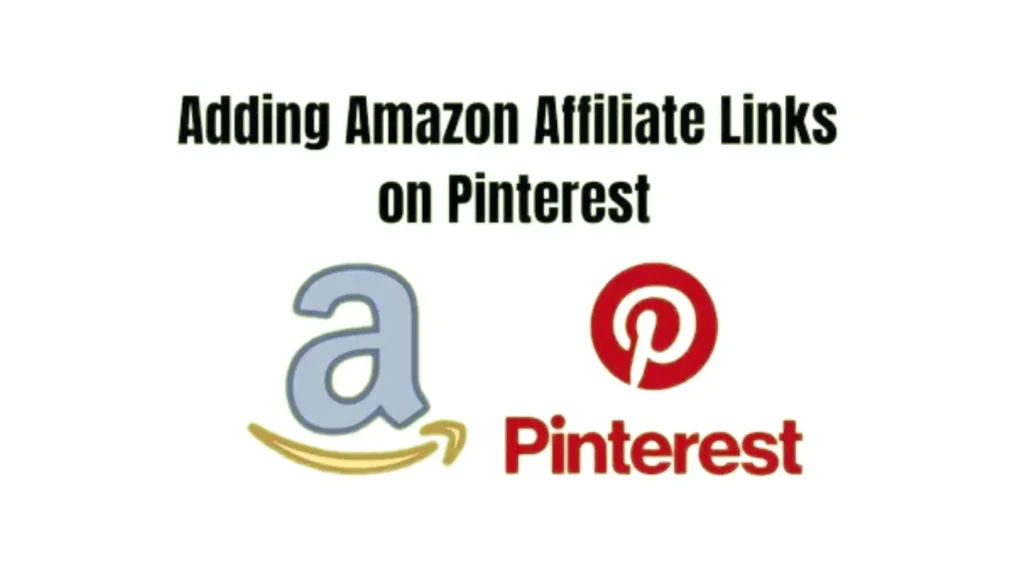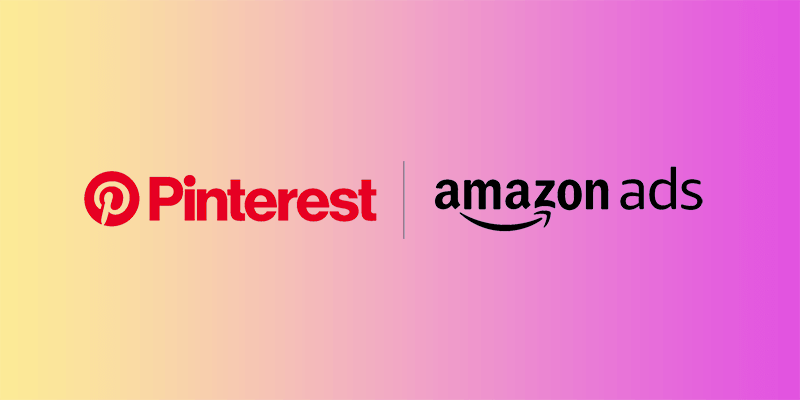Introduction
Affiliate Marketing, In the vast and ever-evolving world of online marketing, affiliate marketing has emerged as a powerful income stream for bloggers, influencers, and entrepreneurs. Among the many affiliate programs available, Amazon Associates remains one of the most accessible and lucrative options, especially for those just starting out. On the other hand, Pinterest has grown from a simple visual discovery tool into a robust platform for marketing and e-commerce.
Combining Amazon’s affiliate program with Pinterest’s visually driven search engine can create a unique opportunity to drive traffic, influence purchasing decisions, and generate passive income. This blog will explore in detail how Amazon affiliate marketing works on Pinterest, from setting up accounts to creating pin-worthy content, understanding compliance, tracking success, and scaling your efforts to build a long-term affiliate income strategy.
Understanding The Basics Of Amazon Affiliate Marketing

Amazon affiliate marketing, officially known as the Amazon Associates Program, allows individuals to promote products listed on Amazon and earn a commission on every sale made through their unique referral link. Once approved as an affiliate, you can access a wide array of tools to create product links and banners that can be shared across different platforms, including Pinterest. The program is free to join and is ideal for content creators and marketers of all sizes.
The beauty of Amazon’s program lies in its simplicity and the trust people already have in the Amazon brand. Once someone clicks your link and makes a purchase — even if it’s not the exact product you promoted — you still earn a commission on the total cart value, provided the purchase is made within the cookie duration window, typically 24 hours. This broadens earning potential significantly.
Why Is Pinterest A Goldmine For Affiliate Marketers?
Pinterest is not just another social media platform. It functions more like a visual search engine, where users actively seek inspiration, products, and solutions for their needs. With over 400 million monthly active users, Pinterest has a high percentage of users with purchasing intent. Unlike platforms like Instagram or TikTok, where users scroll for entertainment, Pinterest users are planners and shoppers. They come to the platform with the intention of discovering ideas and often click through to websites and online stores.
This behavior makes Pinterest an ideal platform for affiliate marketing. Its visual nature allows you to present Amazon products in aesthetically pleasing, engaging formats that capture attention and drive traffic. Pins on Pinterest also have a long lifespan. A single well-optimized pin can continue generating traffic and income months or even years after it’s posted, giving your affiliate efforts a long-term advantage.
Setting Up Your Amazon And Pinterest Accounts
Affiliate Marketing, To start Amazon affiliate marketing on Pinterest, the first step is to sign up for the Amazon Associates program. You’ll need a functioning website, blog, or content hub to get approved, although this requirement has evolved to include popular social media platforms like YouTube or Pinterest in some cases. After getting approval, you gain access to tools like SiteStripe, which lets you generate affiliate links directly from product pages.
On Pinterest, you’ll need a business account, which is free and provides access to analytics and advertising features. Once your Pinterest business account is set up, it’s important to optimize your profile by adding a clear description, linking your website or Amazon affiliate hub, and using a high-quality profile image or logo. This sets the foundation for building credibility and driving consistent traffic to your pins and links.
Creating Effective And Compliant Affiliate Pins
Success with Amazon affiliate marketing on Pinterest depends heavily on your ability to create visually appealing and compliant pins. Start by selecting products that align with your niche or audience interests. Pinterest users engage more with pins that are tall, well-designed, and offer value in the form of ideas or inspiration. Use high-resolution images, preferably lifestyle photos or mockups that show the product in use, as these perform better than plain product images.
Pair your visuals with compelling titles and detailed descriptions that include relevant keywords for search optimization. It’s important to always disclose your affiliate relationship according to FTC guidelines. This can be done by adding “#affiliate” or “#ad” in your pin description. Avoid using Amazon’s product images directly or copying descriptions word-for-word. Instead, create original content that adds context or suggests how the product can be used, making your pins more engaging and Pinterest-friendly.
Pinning Strategies That Drive Clicks And Conversions
Having great pins is one thing, but knowing how to share them effectively is another. Timing and frequency matter on Pinterest. Pin consistently and during peak activity hours to maximize visibility. Use Pinterest’s native scheduler or tools like Tailwind to plan your pins in advance and ensure regular activity on your account. Group your pins into relevant boards, each with a specific theme or category. This helps Pinterest understand what your content is about, increasing its chances of appearing in search results.
Affiliate Marketing, Rich Pins, which pull metadata from linked pages, are another tool to enhance your pins’ appearance and value. Although not all Amazon links support Rich Pins, creating supporting blog posts that house affiliate links and then linking to those posts via Pinterest is a strategy many affiliates use successfully. Engagement metrics such as repins, clicks, and saves signal Pinterest to boost your pin’s visibility in user feeds and search results.
Using Pinterest SEO To Increase Visibility
Just like Google, Pinterest has its own search algorithm. Optimizing your pins for Pinterest SEO is essential to get discovered. Start by doing keyword research on Pinterest itself. Use the search bar to see suggested search terms related to your niche or product. Incorporate these keywords into your pin titles, descriptions, board names, and even your username if it’s relevant.
Use hashtags sparingly and only if they add value, as Pinterest’s algorithm relies more on contextual relevance than social signals. Board descriptions should also include targeted keywords, making it easier for Pinterest to categorize your content. The more relevant your pins are to search queries, the higher your chances of showing up in top results. Over time, this increases your exposure and affiliate click-through rates without the need for paid promotions.
Driving Traffic Through Supporting Content

One of the smartest strategies for Amazon affiliate marketing on Pinterest is to create a content hub that supports your pins. This could be a blog, niche website, or even a landing page where you review or feature multiple related Amazon products. Instead of linking directly to Amazon from every pin, you can drive Pinterest users to these content-rich pages that provide more value and encourage deeper engagement.
For example, a pin featuring “10 Best Kitchen Gadgets Under $25” can link to a blog post listing those items with embedded Amazon affiliate links. This method not only improves conversion rates but also builds trust and authority over time. Supporting content allows you to elaborate on product features, add personal insights, and offer recommendations, all of which contribute to higher click-through rates and affiliate sales.
Staying Compliant With Amazon And Pinterest Policies
A critical aspect of succeeding with Amazon affiliate marketing on Pinterest is understanding and adhering to both platforms’ policies. Amazon has strict guidelines regarding how and where affiliate links can be shared. As of current rules, Amazon does not allow the direct use of affiliate links in paid Pinterest ads or email marketing. Additionally, using Amazon’s brand assets, such as logos and images, without permission is against their terms.
Affiliate Marketing, avoid shortened URLs that mask the Amazon affiliate ID and always include a proper disclosure of your affiliate relationship in each pin. Pinterest’s community guidelines also stress the importance of authenticity and spam avoidance. Affiliate Marketing, Do not over-pin the same content, and avoid misleading titles or descriptions. Being transparent and ethical in your marketing not only builds user trust but also protects your account from suspension or termination.
Tracking Performance And Optimizing Results
To maximize your results with Amazon affiliate marketing on Pinterest, it’s important to track performance metrics. Pinterest Analytics offers insights into impressions, saves, clicks, and audience engagement for each pin. Meanwhile, Amazon Associates Central provides reporting on clicks, conversions, earnings, and which products are selling.
By analyzing this data, you can identify which types of pins perform best, which boards generate the most traffic, and which product categories are converting. Use this information to refine your strategy, create more of what works, and discontinue tactics that underperform. Consider running A/B tests on pin designs, descriptions, and posting times to optimize every aspect of your campaign. Over time, this data-driven approach can significantly improve your affiliate earnings and help you scale your efforts more effectively.
Monetizing Seasonal And Evergreen Trends
Pinterest users often plan for seasonal events and holidays weeks or even months in advance. Leveraging this behavior can give your affiliate marketing a significant boost. Create pins and content centered around seasonal needs, such as “Best Gifts for Mother’s Day” or “Top Back-to-School Supplies.” Use Amazon’s trending product sections and Pinterest’s seasonal trend reports to align your content with what people are actively searching for.
At the same time, don’t neglect evergreen topics that have consistent demand throughout the year. Niches like home decor, fitness gear, beauty products, and tech gadgets tend to perform well year-round. Balancing seasonal spikes with evergreen content ensures you have a steady flow of traffic and conversions throughout the year.
Scaling Your Affiliate Strategy With Automation And Tools

As your Pinterest presence grows, managing your content manually becomes more time-consuming. This is where automation tools and schedulers like Tailwind come in handy. Tailwind allows you to plan and post pins in advance, join niche-specific Tailwind Tribes to amplify reach, and analyze performance in greater detail.
You can also use Canva to streamline pin design creation, making it easier to maintain visual consistency and branding. For affiliate link management, tools like Pretty Links or ThirstyAffiliates (if you’re using a website) can help track clicks and organize links efficiently. Automating repetitive tasks frees up time for strategy and creativity, enabling you to produce more content, test new niches, and grow your affiliate income faster.
Building A Long-Term Income With Pinterest Affiliate Marketing
The beauty of combining Amazon affiliate marketing with Pinterest lies in its scalability and longevity. By consistently posting optimized pins, tracking results, and refining strategies, you can build a robust library of affiliate content that generates passive income month after month. As your pins gain traction and your boards grow, so does your reach and earning potential.
Affiliate Marketing, Some users even create multiple niche accounts to diversify income streams and test different markets. The key is to treat affiliate marketing as a long-term business, not a get-rich-quick scheme. Invest in learning the platform, staying updated on changes to policies and algorithms, and continuously improving your content. With patience and persistence, Pinterest can become a high-converting traffic source that supports a sustainable affiliate income from Amazon.
Conclusion
Amazon affiliate marketing on Pinterest is a powerful and accessible way to earn passive income by leveraging the synergy between a trusted e-commerce giant and a visual discovery platform with strong user intent. From setting up your accounts and creating compelling pins to optimizing for search and tracking results, the process involves creativity, strategic thinking, and adherence to policies.
By focusing on value-driven content, smart pinning strategies, and continuous optimization, you can turn Pinterest into a highly effective marketing channel for your Amazon affiliate links. Whether you’re a beginner exploring your first income stream or an experienced marketer looking to expand your reach, this combination offers incredible potential for growth and financial rewards.

